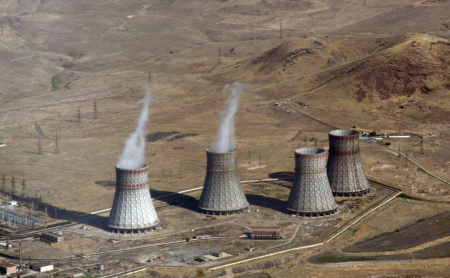The fate of the 41-year-old Armenian Nuclear Power Plant (ANPP), commonly known as Metsamor, is up for debate yet again as reports have emerged questioning whether the Armenian government will abandon plans for renewal or replacement altogether. Metsamor, which is the only nuclear energy plant in the South Caucasus and one of the five remaining Soviet nuclear reactors of its kind, provides energy to 40% of Armenian consumers. Despite its critical role in Armenia’s modern energy economy, its aging design and proximity to earthquake-prone areas make it among the most dangerous nuclear plants in the world.
Built in 1976, the plant was shut down in 1989 by Soviet officials, following the devastating Spitak Earthquake. However, the economic difficulty and energy scarcity in Armenia after the collapse of the USSR in 1991, motivated the new Armenian government to relaunch the second of the plant’s two units. Since then, the reactor’s operations have been a contentious issue both domestically and internationally. The issue was even addressed in an impending EU-Armenia trade agreement, where a 350-page, publicly-released draft text stipulated the reactor should be closed and replaced (though practical measures in enforcing this were notably vague).
For years, Armenian officials have pledged to build a new nuclear plant, which was originally scheduled to expire in 2016, but in 2015, an extension was granted by the International Atomic Energy Agency (IAEA) allowing the site to continue operating until 2027…
Replacing the plant will require serious investment—around five billion dollars—which would fund a medium capacity plant (600 megawatts). Closing the plant would deprive millions of people of electricity, without a viable alternative, and would deal a blow to the security of the country.
Excerpts from The Uncertain Fate of Armenia’s Nuclear Power Plant, The Armenian Weekly, Oct. 20, 2017
